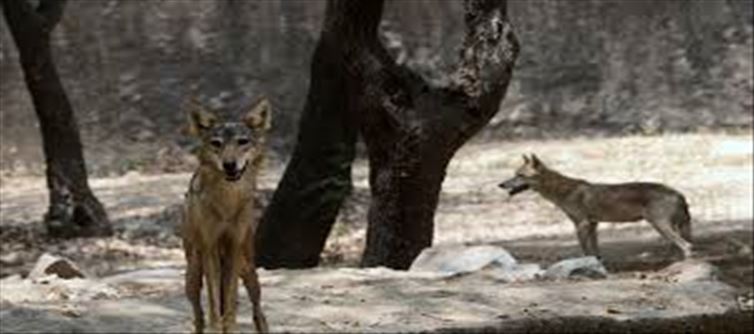
In August, a troubling resurgence occurred in Uttar Pradesh’s bahraich district, where wolves, which had not been reported as threats to humans for nearly 30 years, have begun attacking and killing children. The last known such incident was in 1997, and prior to that, there were only a couple of recorded instances in the 1980s.
Dr. YV Jhala, a senior wildlife scientist and former dean of the Wildlife Institute of india (WII), Dehradun, explains that wolf attacks on humans are extremely rare. Historically, such incidents have been limited to rural areas in Uttar Pradesh and Bihar, where poverty is prevalent and homes are minimally secured. Wolves typically prey on livestock, deer, chinkara, and smaller animals, but as their natural grassland habitats diminish, they are forced into areas dominated by humans. When their usual prey is scarce, wolves may turn to young, unattended children, which can reinforce this predatory behavior once successful.
The recent attacks have caused significant alarm in the local communities, leading to a mistaken killing of a jackal, which was thought to be a wolf. The forest department has managed to capture four wolves, but two, likely the adults leading the pack, remain at large.
Dr. Bilal Habib, another senior wildlife scientist from WII, emphasizes that swift action is required to prevent further attacks. Wolves, which typically hunt every 3-5 days, will continue their predation if not captured soon. Since children are easier targets, immediate protection measures are essential. Dr. Habib notes that while wolf attacks on humans are unusual, this behavior can be triggered by the surrounding circumstances, such as wolves straying into villages during the monsoon season when children might sleep outdoors to avoid the heat.
Indian wolves, characterized by their yellow-brown coats and slender, long legs, are territorial and typically establish home ranges of around 250 square kilometers. With approximately 2,000 wolves left in india, most are found outside protected forests in scrubs and grasslands. Dr. Abi Vanak, a senior ecologist at ATREE, Bengaluru, suggests that eliminating the problematic pack might be necessary to prevent the spread of this dangerous behavior to other wolves.
There is some debate among scientists regarding whether the wolves involved could be hybrids with domestic dogs. While cross-breeding between wolves and dogs is possible, it remains unproven without capturing and conducting dna profiling.
The dwindling habitat of grasslands, now often treated as wastelands, increases the likelihood of such conflicts. Experts recommend improving rural infrastructure, such as providing secure housing, power, and sanitation, to reduce these incidents. In the meantime, it is advised to keep children secured at night to minimize the risk of wolf attacks.




 click and follow Indiaherald WhatsApp channel
click and follow Indiaherald WhatsApp channel